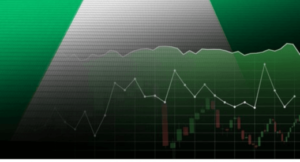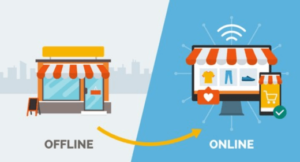In an era where digital marketing budgets are scrutinized for their impact, maximizing ROI has become a non-negotiable goal for businesses investing in Google Ads. As of 2025, Google Ads remains one of the most effective platforms for driving targeted traffic, generating leads, and increasing sales. However, with rising competition and evolving consumer behavior, achieving optimal ROI requires data-driven strategies and adaptability to the latest trends.
This article outlines key strategies businesses should adopt to maximize ROI from their Google Ads campaigns in 2025, supported by insights, facts, and actionable techniques.
1. Leverage AI-Powered Campaign Automation
Google Ads has continued to enhance its AI-driven tools, such as Performance Max campaigns and Smart Bidding, to help advertisers optimize their campaigns in real time. By 2025, these tools are more sophisticated than ever, leveraging machine learning to analyze vast datasets and make decisions faster than any human marketer.
Key Insights:
- AI-powered campaigns have been shown to increase conversion rates by up to 30% compared to manually managed campaigns (Google Internal Data, 2024).
- Smart Bidding strategies like Target ROAS (Return on Ad Spend) or Maximize Conversions adjust bids dynamically to achieve specific business goals.
Actionable Strategy:
Enable automation for ad placements, bids, and targeting. Pair these tools with well-structured campaign goals to allow AI to perform optimally. For instance, using Performance Max can help unify your ads across Google’s entire inventory (Search, Display, YouTube, and Discovery) for better reach and efficiency.
2. Embrace First-Party Data in a Privacy-First World
As third-party cookies phase out, leveraging first-party data has become critical for audience targeting and personalization. Google Ads now integrates seamlessly with platforms like Google Analytics 4 (GA4), which emphasizes privacy-compliant data collection.
Key Statistics:
- Over 63% of marketers say they’ve increased reliance on first-party data for advertising (IAB, 2024).
- Personalized ads based on first-party data have 50% higher engagement rates than generic campaigns.
Actionable Strategy:
Focus on collecting and using first-party data through email sign-ups, loyalty programs, and CRM integrations. Use Customer Match on Google Ads to upload first-party data and create highly targeted campaigns that speak directly to your audience’s needs.
At Kabod Global Resources, our digital marketing services specialize in building first-party data strategies to ensure your campaigns stay ahead of the curve.
3. Refine Audience Segmentation with Predictive Analytics
Google’s advanced analytics capabilities now allow marketers to segment audiences with laser precision. Predictive analytics can help forecast user behaviors, enabling advertisers to target users more likely to convert.
Example in Practice:
- Predictive audiences in GA4, such as “Likely to Purchase” or “Likely to Churn,” can be synced with Google Ads for highly effective targeting.
- Segmented campaigns have been proven to deliver 2x higher click-through rates (CTR) compared to non-segmented campaigns (WordStream, 2023).
Actionable Strategy:
Create audience segments based on lifecycle stages, engagement patterns, and predicted actions. For instance, use predictive analytics to identify repeat purchasers and tailor exclusive offers to them, maximizing lifetime value.
If you’re looking to master audience segmentation and predictive analytics, Kabod Global Resources offers training tailored to equip your team with the skills to create smarter campaigns.
4. Optimize for Voice and Visual Search
With the rise of smart devices and AI assistants, voice and visual search are becoming integral to how users find products and services. By 2025, 50% of online searches are expected to be voice-activated (Juniper Research). Additionally, Google Lens has made visual search more accessible, especially for e-commerce brands.
How This Affects Google Ads:
- Voice search queries are typically longer and more conversational, influencing the structure of search ads.
- Visual search can boost product discovery, particularly for visually driven industries like fashion and home décor.
Actionable Strategy:
Optimize your ad copy for long-tail keywords and conversational phrases to capture voice search traffic. For visual search, ensure your product images are high quality and enriched with relevant metadata to make them searchable on Google.
Need help navigating these changes? Our expert consultants at Kabod Global Resources can help you optimize your Google Ads strategy for emerging trends like voice and visual search.
5. Prioritize Mobile Optimization and Local Targeting
As mobile internet usage dominates, ensuring your ads and landing pages are mobile-friendly is crucial. Additionally, local searches like “near me” have grown exponentially, with 76% of users visiting a business within 24 hours after a local search (Think With Google, 2023).
Actionable Strategy:
- Invest in responsive ads that automatically adjust to fit different screen sizes.
- Use location-based targeting features, such as location extensions and local campaigns, to drive foot traffic to physical stores.
6. Focus on Ad Creative that Drives Action
With increased competition, standing out in Google Ads requires attention-grabbing, conversion-driven creatives. By 2025, users are more likely to engage with visually appealing, interactive, and highly relevant ads.
Example:
Interactive display ads have a 47% higher engagement rate than static ads (Interactive Advertising Bureau, 2024).
Actionable Strategy:
A/B test multiple ad creatives to identify which combinations of visuals, headlines, and CTAs drive the best performance. For instance, using carousel ads to showcase a variety of products can increase click-through rates significantly.
7. Measure and Optimize with Advanced Analytics
Measuring performance goes beyond clicks and impressions in 2025. Advertisers must track advanced metrics, such as engagement rates, conversion paths, and customer lifetime value (CLV), to understand ROI comprehensively.
Key Insight:
- Businesses using data-driven attribution models have reported 20% higher ROIs than those using last-click attribution (Google Marketing Platform, 2023).
Actionable Strategy:
Switch to data-driven attribution in Google Ads to gain a holistic view of your customer journey. Continuously monitor performance metrics and make iterative improvements to maximize ROI.
Conclusion: 2025 is the Year of Smarter Google Ads Strategies
As digital marketing evolves, maximizing ROI with Google Ads requires marketers to stay agile, data-savvy, and innovative. By embracing AI-powered tools, leveraging first-party data, optimizing for new search behaviors, and focusing on impactful ad creatives, businesses can unlock the full potential of their advertising budgets.
At Kabod Global Resources, we combine industry-leading digital marketing services with tailored training programs to help businesses and marketing teams achieve measurable results. Whether you’re looking to refine your Google Ads strategy or train your team on cutting-edge techniques, we’ve got you covered.
Contact us today to discover how we can partner with you to elevate your advertising efforts in 2025 and beyond!




